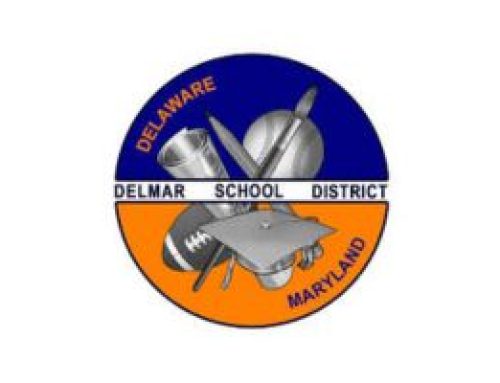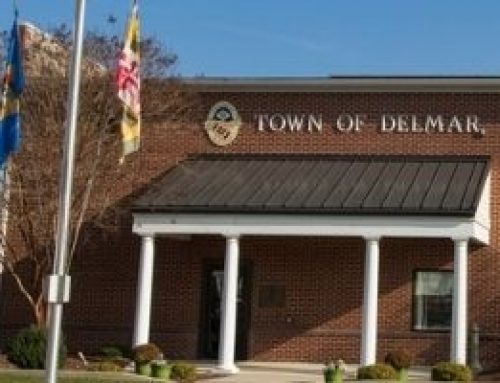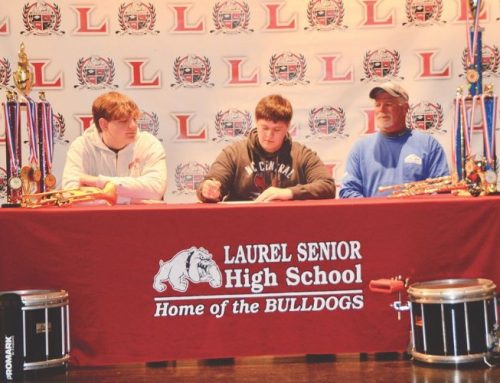NASA touched down at the Laurel Public Library on Tuesday, March 5 for two programs: one for children at 3:30 p.m., and the other at 5:30 p.m. Amy Barra, who works at Wallops Island, talked about solar eclipses, events happening at Wallops Island as well as how rocket projection works with the children.
Following a presentation by Barra, children were then shown how to make straw rockets which were then projected from a mini-launching pad. The children added clay to the nose of their rockets and then fins filled the room. They then prepared their straw rockets for launch. They had to wait for the “launch window” – a time when Barra determined the countdown should begin.

Amy Barra, who works at Wallops Island, talked about solar eclipses, events happening at Wallops Island as well as how rocket projection works with the children. Photo by Rebecca Jones
Barra, the “Range Manager,” then told children to “evacuate the range area!” That’s where the straw rockets would land. The countdown began, adults as well as children waited in anticipation for the “launch” command. Then, little homemade rockets propelled by air pressure soared through the room. Some barely launched, forming a weak “U” shape before thudding to the ground. Some almost hit the target drawn on a white board in the community room. Some children picked up retrieved their rockets in triumph while others tried to make adjustments on their creations so they could soar the next time they made it to the launch site.
Over 30 children participated in this tactile program. They were each given a NASA sticker, as well as eclipse glasses, with a warning not to look directly into the sun.
Children’s Librarian Stacy Lane reminded all who attended about the “Eclipse Day” party to be held at the library on April 8. She said there would be a disc jockey on hand, as well as goodie bags and craft projects associated with the eclipse. Eclipse glasses would also be given out.
“It was fun,” said Barra regarding the children’s program. “It’s great to be able to get out and talk about APEP – ‘Atmospheric Perturbations around Eclipse Path’ – and talk about the programs at Wallops Island.”




